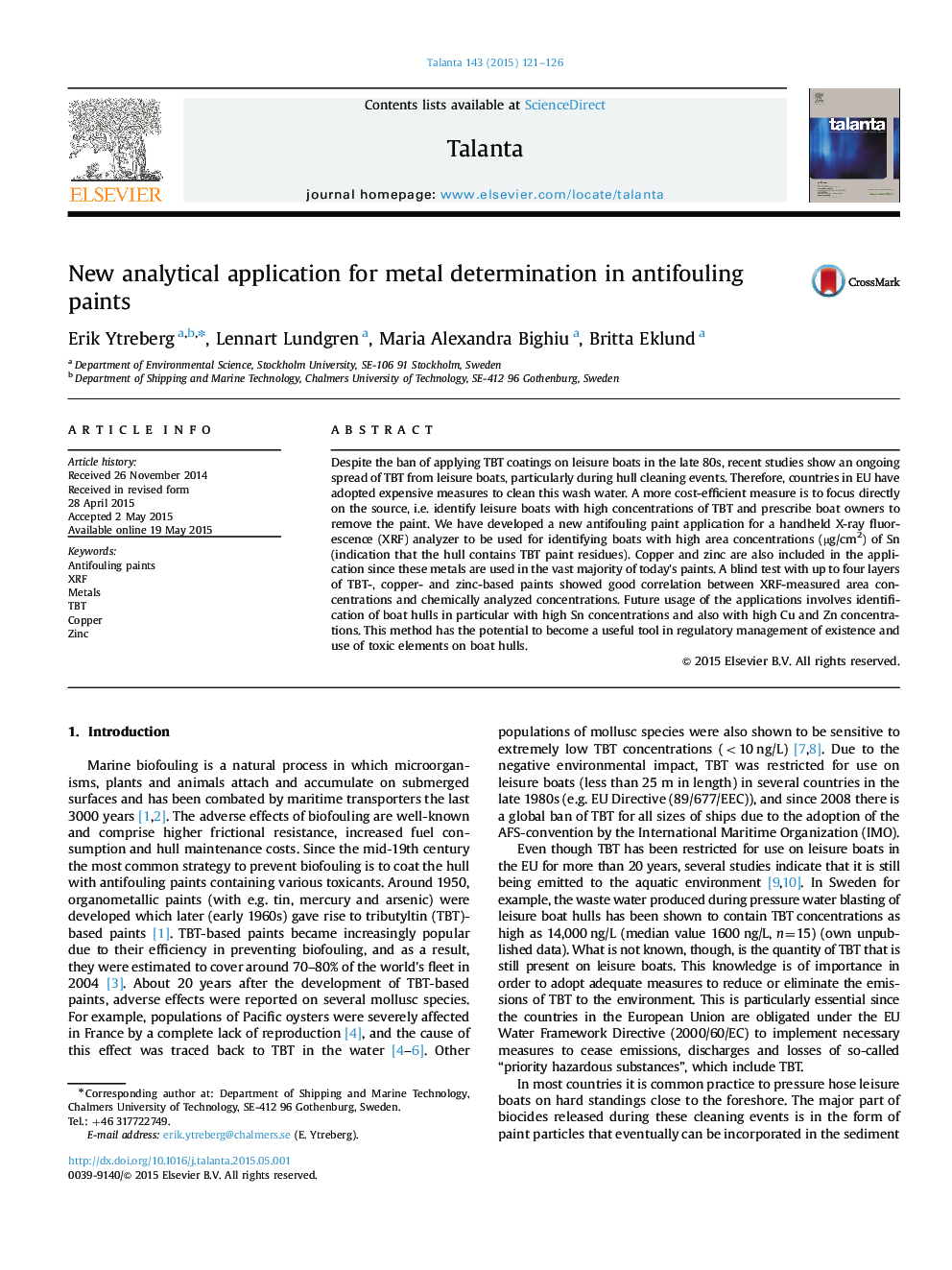| Article ID | Journal | Published Year | Pages | File Type |
|---|---|---|---|---|
| 1241864 | Talanta | 2015 | 6 Pages |
•A new XRF application for analyzing metals in antifouling paints is described.•Antifouling paint standards were developed and analyzed with XRF and ICP-SFMS.•The analytical data was used for developing an empirical model.•A validation showed the application to work well at paint thicknesses up to 500 µm.•The method can be a useful tool in regulatory management.
Despite the ban of applying TBT coatings on leisure boats in the late 80s, recent studies show an ongoing spread of TBT from leisure boats, particularly during hull cleaning events. Therefore, countries in EU have adopted expensive measures to clean this wash water. A more cost-efficient measure is to focus directly on the source, i.e. identify leisure boats with high concentrations of TBT and prescribe boat owners to remove the paint. We have developed a new antifouling paint application for a handheld X-ray fluorescence (XRF) analyzer to be used for identifying boats with high area concentrations (µg/cm2) of Sn (indication that the hull contains TBT paint residues). Copper and zinc are also included in the application since these metals are used in the vast majority of today's paints. A blind test with up to four layers of TBT-, copper- and zinc-based paints showed good correlation between XRF-measured area concentrations and chemically analyzed concentrations. Future usage of the applications involves identification of boat hulls in particular with high Sn concentrations and also with high Cu and Zn concentrations. This method has the potential to become a useful tool in regulatory management of existence and use of toxic elements on boat hulls.
Graphical abstractFigure optionsDownload full-size imageDownload as PowerPoint slide
